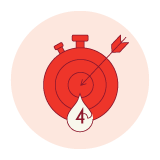Greening SANBS
Environmental imperatives as we manage our natural capital


Introduction
The Greening Task Team, comprising cross-functional staff and managers, continued its activities to “reduce SANBS’s impact on the environment”.
Focus on the greening efforts during the past financial year was limited due to the collective efforts of business being diverted to dealing with the Covid-19 pandemic. In some areas we have seemingly made considerable progress in reducing carbon emissions e.g. flight travel, although this is a false positive in that severe restrictions were placed on travel, by both Government and the SANBS.
For 2020-2021 SANBS’s overall carbon emission as presented from the data collected totals 18 188 tons. This is an overall reduction of 11 % on the previous year. 99% of this total is attributable to a decrease in electricity consumption and business travel.
The Coronavirus pandemic has provided an ideal opportunity for the mandatory use of technology such as video conferencing. The lockdown has seen considerably fewer flights being undertaken and reduced business travel and we expect this situation to continue – contributing to SANBS’s greening objectives.
Energy and Carbon

Sustainability objective 1: Conserve energy
To reduce the carbon footprint, focussing in particular on the reduction in the use of electricity from the national grid.
2020-21 Update
Progress against our objective

Plans for 2021-2022
Technology improvements
Culture change
Information assets

Water

Sustainability objective 2: Optimisation of Water consumption and conservation
2020-21 Update

Progress against our objective
Although limited progress was made, the additional borehole water tank and borehole at Mt Edgecombe will drive improvements with this objective.
Plans for 2021-2022
Technology improvements
Culture change
Information assets
Land and Air pollution

Sustainability objective 3: Manage Land and Air Pollution
2020-21 Update
General waste
During the year, 38mt of general waste was recycled while 26mt was sent to the landfill. Carbon reduction from recycling amounted to 17.6mt.
Flight travel
Road travel
Printing
Progress against our objective
Further investigations need to be undertaken to identify why there has not been a reduction in printing similar to the other carbon emission elements we are tracking

Plans for 2021-2022
Technology improvements
Culture change
Information assets
Procurement

Sustainability objective 4: Optimise procurement
Make sure that the products and services procured for SANBS are as sustainable as possible with the lowest environmental impact
2020-21 Update
Plans for 2021-2022
Technology improvements
Culture change
Information assets
Green building

Sustainability objective 5: Green building
Ensure that all SANBS owned buildings are built and operated in an environmentally sustainable way.
2021-2022 Update


Culture change

Sustainability objective 6: Culture change


